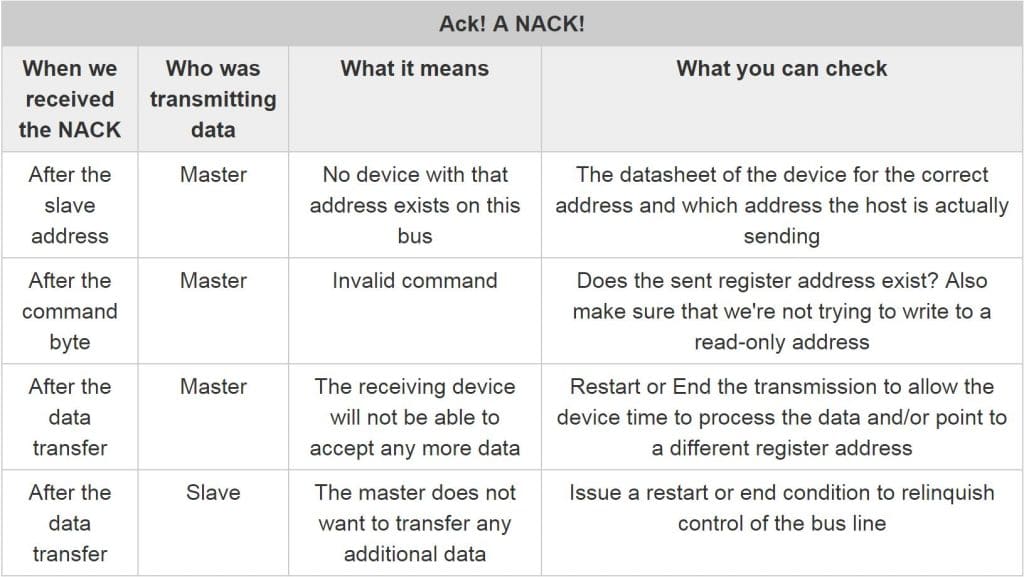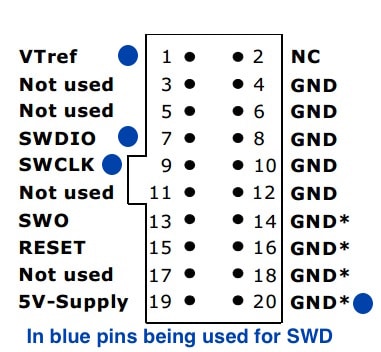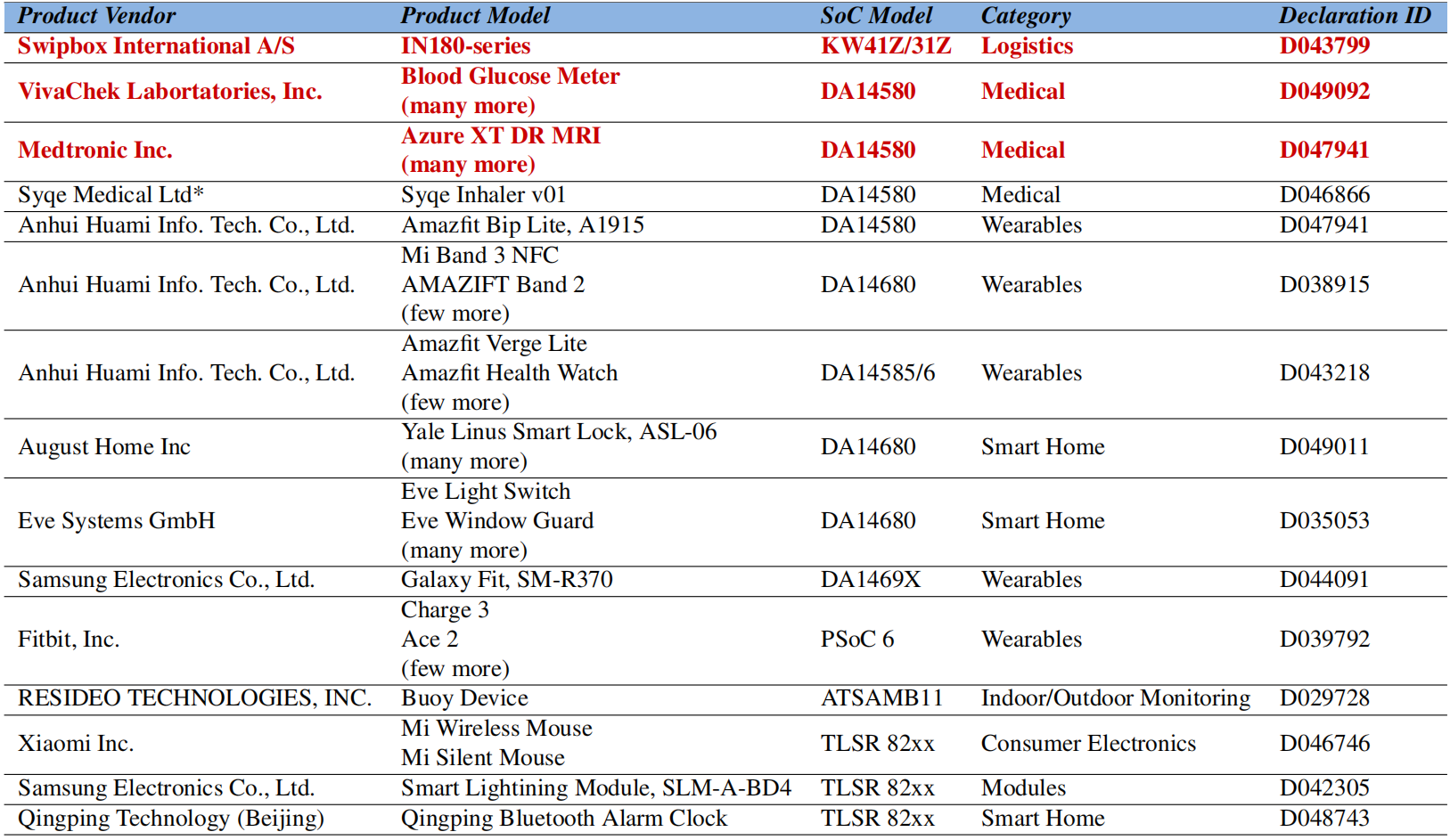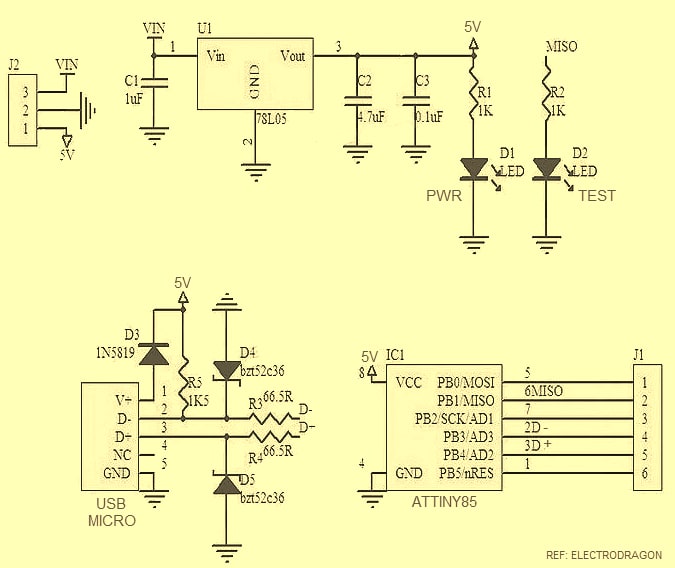Bootloader 및 Application 펌웨어가 있는 경우 양산시 하나의 파일을 합쳐서 프로그래밍을 하면 1단계가 줄어든다.
Hex 파일 합치기
srec_cat.exe 이라는 윈도우즈 프로그램을 사용하여 다음과 같이 하나의 파일로 합친다.
srec_cat.exe HexFile1.hex -Intel HexFile2.hex -Intel -o MergedHexFile.hex -Intel
인텔 Hex 파일포맷
Record Format
:llaaaatt[dd...]cc
- : is the colon that starts every Intel HEX record.
- ll is the record-length field that represents the number of data bytes (dd) in the record.
- aaaa is the address field that represents the starting address for subsequent data in the record.
- tt is the field that represents the HEX record type, which may be one of the following:
00 – data record
01 – end-of-file record
02 – extended segment address record
04 – extended linear address record
05 – start linear address record (MDK-ARM only)
- dd is a data field that represents one byte of data. A record may have multiple data bytes. The number of data bytes in the record must match the number specified by the ll field.
- cc is the checksum field that represents the checksum of the record. The checksum is calculated by summing the values of all hexadecimal digit pairs in the record modulo 256 and taking the two’s complement.
Data Records
:10246200464C5549442050524F46494C4500464C33
This record is decoded as follows:
:10246200464C5549442050524F46494C4500464C33
||||||||||| CC->Checksum
|||||||||DD->Data
|||||||TT->Record Type
|||AAAA->Address
|LL->Record Length
:->Colon
- 10 is the number of data bytes in the record.
- 2462 is the address where the data are to be located in memory.
- 00 is the record type 00 (a data record).
- 464C…464C is the data.
- 33 is the checksum of the record.
Extended Linear Address Records (HEX386)
Extended linear address records are also known as 32-bit address records and HEX386 records. These records contain the upper 16 bits (bits 16-31) of the data address. The extended linear address record always has two data bytes and appears as follows:
:02000004FFFFFC
- 02 is the number of data bytes in the record.
- 0000 is the address field. For the extended linear address record, this field is always 0000.
- 04 is the record type 04 (an extended linear address record).
- FFFF is the upper 16 bits of the address.
- FC is the checksum of the record and is calculated as
01h + NOT(02h + 00h + 00h + 04h + FFh + FFh).
When an extended linear address record is read, the extended linear address stored in the data field is saved and is applied to subsequent records read from the Intel HEX file. The linear address remains effective until changed by another extended address record.
The absolute-memory address of a data record is obtained by adding the address field in the record to the shifted address data from the extended linear address record. The following example illustrates this process..
Address from the data record's address field 2462
Extended linear address record data field FFFF
--------
Absolute-memory address FFFF2462
Extended Segment Address Records (HEX86)
Extended segment address records-also known as HEX86 records-contain bits 4-19 of the data address segment. The extended segment address record always has two data bytes and appears as follows:
:020000021200EA
- 02 is the number of data bytes in the record.
- 0000 is the address field. For the extended segment address record, this field is always 0000.
- 02 is the record type 02 (an extended segment address record).
- 1200 is the segment of the address.
- EA is the checksum of the record and is calculated as
01h + NOT(02h + 00h + 00h + 02h + 12h + 00h).
When an extended segment address record is read, the extended segment address stored in the data field is saved and is applied to subsequent records read from the Intel HEX file. The segment address remains effective until changed by another extended address record.
The absolute-memory address of a data record is obtained by adding the address field in the record to the shifted-address data from the extended segment address record. The following example illustrates this process.
Address from the data record's address field 2462
Extended segment address record data field 1200
--------
Absolute memory address 00014462
Start Linear Address Records (MDK-ARM only)
Start linear address records specify the start address of the application. These records contain the full linear 32 bit address. The start linear address record always has four data bytes and appears as follows:
:04000005000000CD2A
- 04 is the number of data bytes in the record.
- 0000 is the address field. For the start linear address record, this field is always 0000.
- 05 is the record type 05 (a start linear address record).
- 000000CD is the 4 byte linear start address of the application.
- 2A is the checksum of the record and is calculated as
01h + NOT(04h + 00h + 00h + 05h + 00h + 00h + 00h + CDh).
The Start Linear Address specifies the address of the __main (pre-main) function but not the address of the startup code which usually calls __main after calling SystemInit(). An odd linear start address specifies that __main is compiled for the Thumb instruction set.
The Start Linear Address Record can appear anywhere in hex file. In most cases this record can be ignored because it does not contain information which is needed to program flash memory.
End-of-File (EOF) Records
:00000001FF
- 00 is the number of data bytes in the record.
- 0000 is the address where the data are to be located in memory. The address in end-of-file records is meaningless and is ignored. An address of 0000h is typical.
- 01 is the record type 01 (an end-of-file record).
- FF is the checksum of the record and is calculated as
01h + NOT(00h + 00h + 00h + 01h).
Example Intel HEX File
Following is an example of a complete Intel HEX file:
:10001300AC12AD13AE10AF1112002F8E0E8F0F2244
:10000300E50B250DF509E50A350CF5081200132259
:03000000020023D8
:0C002300787FE4F6D8FD7581130200031D
:10002F00EFF88DF0A4FFEDC5F0CEA42EFEEC88F016
:04003F00A42EFE22CB
:00000001FF
참고







